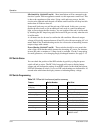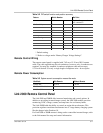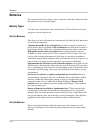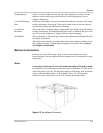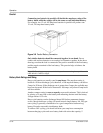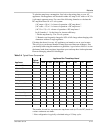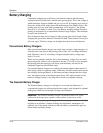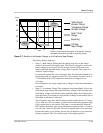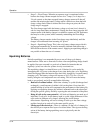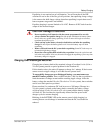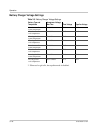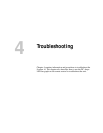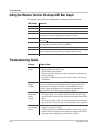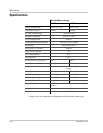
Operation
3–14 975-0251-01-01
• Stage 3—Float Charge. When the acceptance stage is terminated, either
because the charge current ramped down to 6 to 7 amps (3 to 4 amps for a
24-volt system) or the timer engaged, battery charger current will shut off
and the unit monitors the battery voltage while it drifts down from the bulk
charge voltage limit. When it reaches the float voltage set point, the float
charge stage is engaged.
The float charge stage holds the battery voltage at a lower level, where it is
safe for long-term battery maintenance. During the float charge stage the full
output current of the battery charger is available to operate any DC appliances
that may be on the system, while constantly maintaining the float charge
voltage.
The battery charger remains in the float charge stage indefinitely until the
charger is disconnected from incoming AC power.
• Stage 4—Equalizing Charge. This is the only battery charger stage which is
not engaged automatically. It must be manually initiated each time using a
DIP switch on the rear of the remote control. Applying an equalizing charge is
not possible without the use of a remote.
Equalizing Batteries
Periodic equalizing is recommended by most wet cell deep-cycle battery
manufacturers. There are no firm rules for how often an equalizing charge should
be applied, but once a month is a good rule of thumb for batteries that are
regularly cycled, less often for systems in only occasional use.
The equalizing charge is a timed 8-hour cycle. If desired, it can be ended by
interrupting the AC power to the charger at any time during the cycle. Equalizing
should be engaged after the batteries have been fully charged by a normal battery
charging cycle. The battery voltage will increase to 16.3 (32.6 for a 24-volt
battery) using the cool temperature wet cell setting. This will cause the battery
bank to gas profusely and will accomplish the following:
• Removal of residual sulfate—Each time a battery is cycled (discharged and
recharged), a small amount of sulfate is left on the plates. Over time, this
gradual buildup of sulfate will compromise the performance of the battery. By
applying an equalizing charge, this sulfate is returned back to the electrolyte,
raising the specific gravity and fully exposing the active material of the plates.
• Bring all cells to the same potential—All lead-acid batteries are made up of
individual 2-volt cells. As the battery bank is cycled, slight differences in the
cells results in different cell voltages, affecting the overall charge
effectiveness. Equalizing will serve to bring all cells up to the same voltage
and the electrolyte in each cell to the same specific gravity.
• Mixing up of the electrolyte—There is a tendency in the cell of a battery for
the electrolyte to separate into layers of acid and water. The vigorous boiling
action of the battery during equalizing serves to physically mix the
electrolyte.



